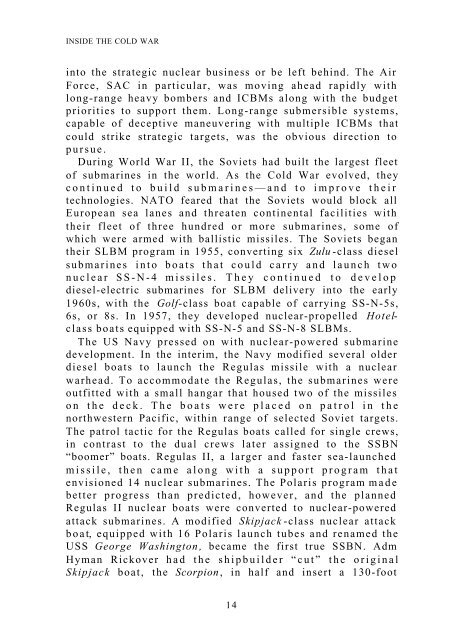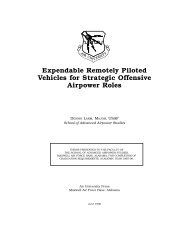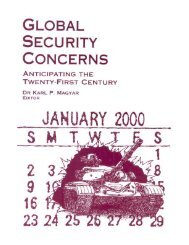Inside the Cold War - Project Gutenberg Consortia Center
Inside the Cold War - Project Gutenberg Consortia Center
Inside the Cold War - Project Gutenberg Consortia Center
You also want an ePaper? Increase the reach of your titles
YUMPU automatically turns print PDFs into web optimized ePapers that Google loves.
INSIDE THE COLD WAR<br />
into <strong>the</strong> strategic nuclear business or be left behind. The Air<br />
Force, SAC in particular, was moving ahead rapidly with<br />
long-range heavy bombers and ICBMs along with <strong>the</strong> budget<br />
priorities to support <strong>the</strong>m. Long-range submersible systems,<br />
capable of deceptive maneuvering with multiple ICBMs that<br />
could strike strategic targets, was <strong>the</strong> obvious direction to<br />
pursue.<br />
During World <strong>War</strong> II, <strong>the</strong> Soviets had built <strong>the</strong> largest fleet<br />
of submarines in <strong>the</strong> world. As <strong>the</strong> <strong>Cold</strong> <strong>War</strong> evolved, <strong>the</strong>y<br />
continued to build submarines—and to improve <strong>the</strong>ir<br />
technologies. NATO feared that <strong>the</strong> Soviets would block all<br />
European sea lanes and threaten continental facilities with<br />
<strong>the</strong>ir fleet of three hundred or more submarines, some of<br />
which were armed with ballistic missiles. The Soviets began<br />
<strong>the</strong>ir SLBM program in 1955, converting six Zulu -class diesel<br />
submarines into boats that could carry and launch two<br />
nuclear SS-N-4 missiles. They continued to develop<br />
diesel-electric submarines for SLBM delivery into <strong>the</strong> early<br />
1960s, with <strong>the</strong> Golf-class boat capable of carrying SS-N-5s,<br />
6s, or 8s. In 1957, <strong>the</strong>y developed nuclear-propelled Hotelclass<br />
boats equipped with SS-N-5 and SS-N-8 SLBMs.<br />
The US Navy pressed on with nuclear-powered submarine<br />
development. In <strong>the</strong> interim, <strong>the</strong> Navy modified several older<br />
diesel boats to launch <strong>the</strong> Regulas missile with a nuclear<br />
warhead. To accommodate <strong>the</strong> Regulas, <strong>the</strong> submarines were<br />
outfitted with a small hangar that housed two of <strong>the</strong> missiles<br />
on <strong>the</strong> deck. The boats were placed on patrol in <strong>the</strong><br />
northwestern Pacific, within range of selected Soviet targets.<br />
The patrol tactic for <strong>the</strong> Regulas boats called for single crews,<br />
in contrast to <strong>the</strong> dual crews later assigned to <strong>the</strong> SSBN<br />
“boomer” boats. Regulas II, a larger and faster sea-launched<br />
missile, <strong>the</strong>n came along with a support program that<br />
envisioned 14 nuclear submarines. The Polaris program made<br />
better progress than predicted, however, and <strong>the</strong> planned<br />
Regulas II nuclear boats were converted to nuclear-powered<br />
attack submarines. A modified Skipjack -class nuclear attack<br />
boat, equipped with 16 Polaris launch tubes and renamed <strong>the</strong><br />
USS George Washington, became <strong>the</strong> first true SSBN. Adm<br />
Hyman Rickover had <strong>the</strong> shipbuilder “cut” <strong>the</strong> original<br />
Skipjack boat, <strong>the</strong> Scorpion, in half and insert a 130-foot<br />
14






